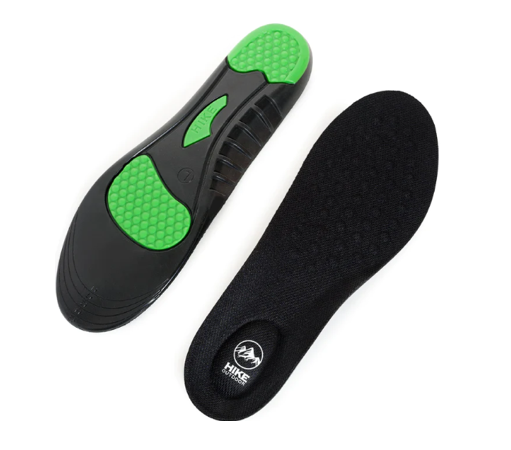You do everything you can to give yourself an edge in the gym, from getting ample rest to optimizing your diet, choosing the best pre-workout, and meticulously planning out each exercise, rep, and set.
But your footwear plays perhaps the most important role in weightlifting, not just from a performance perspective but also from a health and safety point of view.
When most people think of gym footwear they envision sleek styles from Nike and Adidas. Or, perhaps your vision of the perfect weightlifting shoes is those with a raised heel to support dynamic movements.
The truth is, though, these styles fall short and can often do more harm than good. But are barefoot shoes good for lifting? Not just good, but optimal! They strip back unnecessary elements to maximize your foot's natural mechanics, enhancing stability and power transfer directly from the ground.
The idea is that less is more in the weight room, and while going completely barefoot is unsafe and unhygienic, barefoot lifting shoes are the next best thing.
However, not all options provide the same level of quality or benefits. That’s why you need the best barefoot shoes for lifting, and they’re just a few clicks away at Hike Footwear.
With more than 565,000 happy customers and a 30-day money-back guarantee, you don’t just have to take our word for it, either! Order yours and feel the difference firsthand.
The Role of Footwear in the Gym
Every detail counts in the fitness realm, especially when you’re lifting weights.
Proper gym shoes provide the necessary support for dynamic movements and heavy lifting, offering a stable base that helps maintain balance and correct posture throughout each exercise - from squats and deadlifts to clean and jerks, snatches, and everything in between.
Your shoes absorb and redistribute impact during high-intensity workouts, which reduces the stress on your joints and minimizes the risk of injuries such as sprains or fractures.
The grip and traction are especially important for pushing the limits of your physical potential. Without adequate grip, you not only risk slipping but also compensating with improper form, potentially leading to strain or muscle imbalances.
We see so many people in the gym lifting in running shoes or even specialized weightlifting shoes - they think they’re setting themselves up for success, but in reality, they’re holding themselves back while taking on unnecessary risk.
So, why are barefoot shoes good for lifting?
Are Barefoot Shoes Good for Lifting?
You’ve probably seen people lifting weights in barefoot shoes in commercial gyms before, and been confused about the science behind this untraditional footwear. Let’s start with the basic characteristics of barefoot shoes and why they’re the optimal choice in any fitness setting.
Overview of Barefoot Shoes
So, what are barefoot shoes? As the name suggests, they’re designed to mimic the natural biomechanics of the foot, promoting a more natural foot strike and alignment.
Here are some of the key characteristics that differentiate barefoot shoes vs regular shoes or barefoot shoes vs running shoes:
- Thin soles: These provide minimal barrier between the foot and the ground, enhancing the wearer's ability to feel the surface beneath them.
- Zero drop: This means there is no height difference between the heel and the toe, encouraging a more natural posture and alignment.
- Wide toe box: Allows toes to spread naturally for better balance and a stronger base.
- Flexible materials: Enable unrestricted movement of the foot, which can contribute to stronger foot muscles.
To put it simply, barefoot shoes are a return to basics - they transport you back to before footwear brands had to design new features in an effort to “stand out”. Many of the characteristics of traditional footwear are simply a marketing tactic.
So, why are barefoot shoes good for lifting?
Why Are Barefoot Shoes Good for Lifting?
We have a detailed guide highlighting the benefits of barefoot shoes in general, but let’s narrow our focus to why you should wear this style in the gym.
First and foremost, the thin soles improve sensory feedback from the ground, which is especially important for complex lifts that require precise balance and technique. This helps you adjust your posture, alignment, and force application during exercises like squats and deadlifts.
They also allow you to distribute weight more evenly across your feet with their zero drop from heel to toe and a wider toe box. This can lead to better stability during lifts, as the feet can adjust and react more naturally without the constraints of thick, cushioned soles.
Over time, you’ll find that your feet become stronger and more stable. This is because barefoot shoes strip away synthetic supports and force your feet to build up their own support system. You’re building more athletic, resilient feet and ankles by switching to barefoot shoes.
While many weightlifting shoes feature a heel to help you get better depth and mobility, this is yet another example of synthetic supports designed to make up for a lack of natural ankle mobility. It can lead to the masking of problematic form deficiencies and imbalances.
In contrast, the lack of heel elevation in barefoot shoes facilitates a more natural squatting and lifting posture, reducing the risk of back and hip injuries.
Are There Any Downsides to Consider?
In the interest of transparency, we do want to highlight a few potential drawbacks to consider when making the switch to barefoot lifting shoes. Just be aware, all of these can be alleviated by choosing the right footwear and giving your feet time to adjust.
The minimal cushioning in barefoot shoes can be a double-edged sword. While it increases ground feel, it also means less shock absorption, which can be a concern when performing high-impact activities - like jumping or running. Again, though, this forces you to improve your form and be more meticulous in how your feet strike the ground.
It’s also worth noting that transitioning to barefoot shoes can be challenging, especially for those used to traditional athletic footwear. There is typically an adjustment period during which the muscles and tendons of the feet and legs adapt to the new demands.
Without a proper adaptation period, the increased strain on the feet can lead to overuse injuries. This is particularly true for individuals who have pre-existing foot conditions or who do not follow a cautious approach to increasing workout intensity.
Don’t worry - we’ll help you avoid all this with some tips on choosing and using barefoot lifting shoes below so you can reap the benefits without the downside!
Choosing the Right Barefoot Lifting Shoes
As we said from the start, Hike Footwear is your one-stop shop for barefoot boots and shoes online, especially when it comes to gym footwear. But in general, what should you look for in choosing your barefoot lifting shoes?
Key Features of Barefoot Lifting Shoes
One of the most important things to look for is that you’re getting nonslip barefoot shoes that will keep you stable on the floor, especially since gym flooring can get slippery as a result of sweat. The last thing you want is to lose your footing performing a heavy deadlift and end up injuring yourself.
You should also focus your search on finding the thinnest soles possible. After all, the closer you are to the ground, the better your connection to the floor. This is especially important for powerlifters, as you can get in a better position when performing deadlifts with as little sole height as possible.
Ensure the shoe offers a wide toe box that allows your toes to spread naturally, aiding in stability and power during your lift. This way, you can “anchor” your feet into the ground for the perfect foundation for any lift.
Of course, you should check for high-quality, durable materials that can withstand the rigors of a gym environment, including resistance to abrasion and tearing.
Cost Considerations
Barefoot shoes can vary widely in price, and often, higher costs correlate with better quality materials and construction. Take the time to think about how much you are willing to spend and look for the best options within that range.
Remember, you almost always get what you pay for. Health is wealth, which is why it’s worth investing in premium quality shoes that empower you to perform your best in the gym.
Plus, investing a bit more upfront can usually save money in the long run if the shoes last longer and support more effective training.
Researching Customer Reviews
Choosing a pair of shoes from an unknown brand can be stressful, but you can leverage the experiences others have had to feel more confident placing your order.
Read through customer reviews to identify common themes associated with a pair of shoes rather than reading reviews in isolation. If many customers reference the same issue, chances are, it’s something you’ll encounter as well.
The Style Side of Things
While function should be the priority, the style of the shoes can also be a consideration, especially if you spend a lot of time at the gym or participate in competitions.
You can choose from a variety of styles - like high top barefoot shoes or low-top styles. You can also find a wide range of colors to choose from to match accessories like lifting belts, knee sleeves, etc.
Invest in Better Performance and Long-term Health at Hike Footwear!
Ready to transform your lifting regimen for the better? Invest in peak performance at Hike Footwear. Our shoes are trusted by the top powerlifters, Olympic lifters, crossfitters, and even casual fitness enthusiasts, with more than 565,000 happy customers and counting.
Each pair is engineered to optimize your training sessions by enhancing the natural mechanics of your feet. They feature an ultra-thin sole that provides exceptional ground feedback so you can maintain optimal balance and stability during lifts.
The wide toe box allows your toes to spread naturally, distributing your weight evenly and improving your body’s alignment. This not only boosts your lifting efficiency but also reduces the risk of injuries by ensuring proper posture throughout your workouts.
They are lightweight and breathable to keep your feet cool and dry even during the most grueling workouts. You get the sensation of lifting barefoot with the protection your feet need in a gym environment - truly the best of both worlds.
We have a wide variety of styles to choose from, too, so you can effortlessly pick the perfect pair for your unique preferences. They’re also incredibly versatile, serving as barefoot winter shoes, barefoot work shoes, barefoot hiking shoes, and casual barefoot shoes alike!
With free shipping and a 30-day money back guarantee, what more could you ask for? Order yours today and feel the difference firsthand!
Advice on Adjusting to Barefoot Shoes for Lifting
Whether you invest in our shoes or another brand, it’s important that you navigate the adjustment period carefully to avoid any of the downsides we discussed earlier. Here are some tips to set you up for success in the gym:
- Start Gradually: Begin by wearing your barefoot shoes for light activities outside the gym, such as walking or everyday errands. This allows your feet and body to adapt to the new feel and mechanics of the shoes without overwhelming stress.
- Integrate Slowly into Training: Once comfortable for daily wear, start incorporating them into your warm-up routines at the gym. Gradually increase the amount of time you spend lifting in them, starting with lower weights and less complex exercises to build your foot strength and adapt to the new ground sensations.
- Focus on Technique: You might notice different sensations and feedback from the ground as you lift in barefoot shoes. Use this opportunity to improve your form, paying close attention to posture, foot placement, and the distribution of weight across your feet.
- Strengthen Your Feet: Incorporate specific exercises like toe curls, heel raises, and barefoot balance drills to increase your foot strength, which is crucial for getting the most out of barefoot lifting.
- Monitor Your Body’s Response: Pay attention to how your body reacts during and after workouts with barefoot shoes. Some initial discomfort might be normal, but persistent pain or discomfort could indicate the need for a slower transition or adjustments in how you’re using the shoes.
Find more tips in our blog, including how to walk in barefoot shoes, wearing socks with barefoot shoes, or the best barefoot shoes for toddlers. At this point, though, it’s time you invested in high-quality barefoot lifting shoes at Hike Footwear as we wrap this guide up below.
Parting Thoughts on the Benefits of Barefoot Lifting Shoes
So, are barefoot shoes good for lifting? As a matter of fact, they’re the best choice!
They promote natural foot alignment, enhance balance, and increase sensory feedback, all of which improve lifting performance. They also help strengthen foot muscles and improve your lifting posture, potentially reducing the risk of injury and boosting your training efficiency.
The key is finding the right pair, and now you know they’re just a click away at Hike Footwear - whether you need men’s barefoot shoes, women’s barefoot shoes, or kids barefoot shoes.
Ready to elevate your performance in the gym? Explore our selection today and step into a new level of performance and foot health no matter how or why you lift!
























































